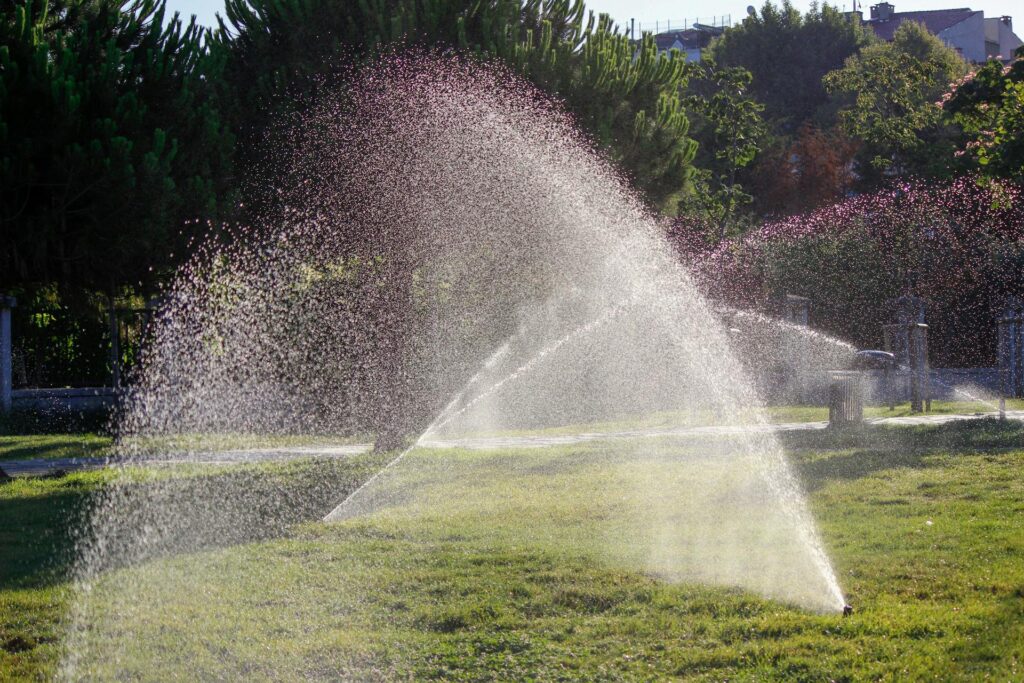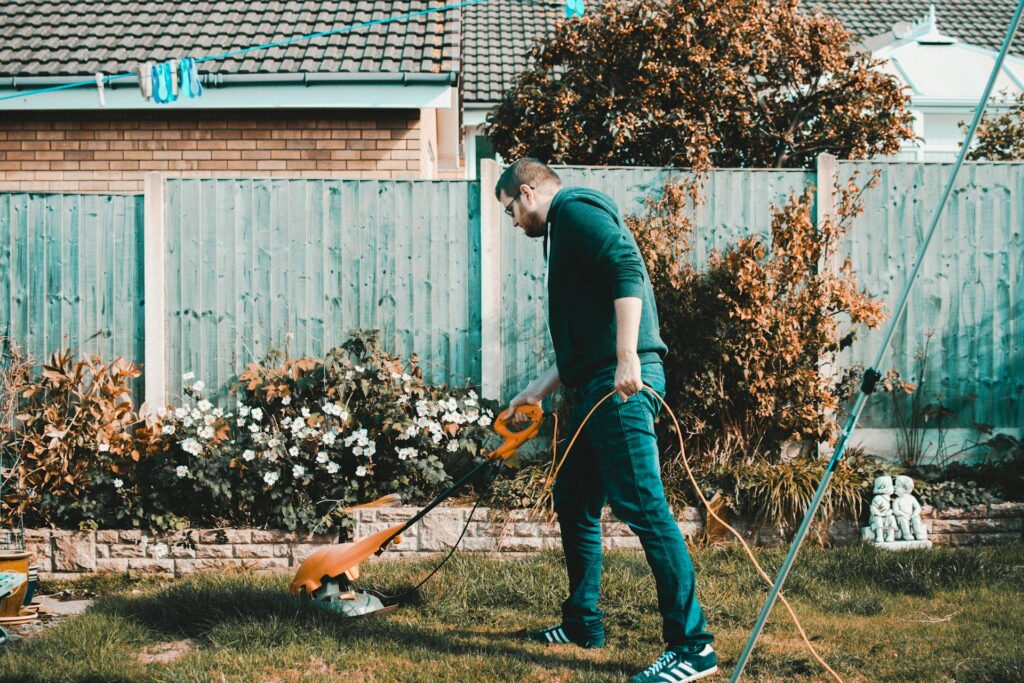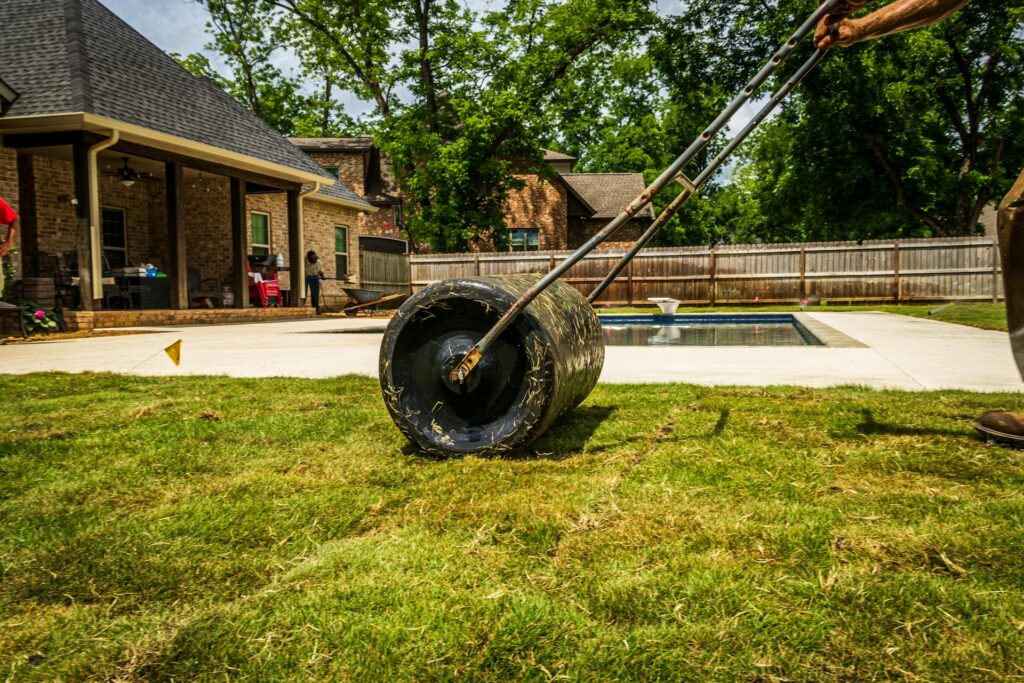A lush, green lawn is the pride of many Australian homeowners, but achieving that perfect turf isn’t always straightforward. With so much advice floating around—some accurate, some misleading—it’s easy to fall for common lawn care myths.
We’re here to set the record straight. In this article, we’ll debunk some of the most persistent myths about lawn care, helping you make informed decisions for a healthier, more vibrant garden.
Myth 1: Watering Your Lawn Daily Keeps It Healthy

The Myth:
Many people believe that lawns need daily watering to stay green and healthy, especially during hot Australian summers.
The Truth:
Overwatering is one of the biggest mistakes homeowners make. Lawns don’t need daily watering—in fact, frequent shallow watering encourages shallow root growth, making grass more susceptible to drought and heat stress.
The Right Approach:
- Water deeply but less frequently (2-3 times per week) to encourage deep root systems.
- Early morning watering is best to reduce evaporation and fungal growth.
- Adjust watering based on rainfall—overwatering can lead to waterlogged soil and disease.
Myth 2: Cutting Grass Very Short Reduces Mowing Frequency

The Myth:
Some homeowners scalp their lawns, thinking that cutting grass extremely short means they won’t have to mow as often.
The Truth:
Cutting grass too short (known as “scalping”) weakens the turf, exposes soil to weeds, and increases moisture loss. Different grass types have ideal mowing heights:
- Buffalo grass: 30–50mm
- Kikuyu: 20–40mm
- Couch grass: 15–30mm
The Right Approach:
- Never remove more than one-third of the grass blade in a single mow.
- Keep mower blades sharp to avoid tearing grass, which can lead to disease.
- Mow regularly rather than drastically cutting height all at once.
Myth 3: Leaving Grass Clippings on the Lawn Causes Thatch

The Myth:
Many believe that leaving grass clippings on the lawn will lead to thatch buildup, suffocating the grass.
The Truth:
Grass clippings decompose quickly and return valuable nutrients (like nitrogen) to the soil. Thatch is actually caused by undecomposed organic matter like roots and stems, not clippings.
The Right Approach:
- Mulch mowing (leaving clippings) is beneficial unless the grass is excessively long.
- Dethatch only when necessary (if the thatch layer exceeds 1cm).
- Aerate your lawn annually to improve decomposition and soil health.
Myth 4: All Fertiliser Is the Same—Just Use Any Type

The Myth:
Some gardeners assume that any fertiliser will work the same way, regardless of its composition.
The Truth:
Different lawns have different nutritional needs. Using the wrong fertiliser (or applying it at the wrong time) can burn grass, promote weeds, or even harm soil microbes.
The Right Approach:
- Use slow-release fertilisers for steady nutrient supply.
- Test your soil to determine pH and nutrient deficiencies.
- Follow seasonal fertilising schedules (e.g., high nitrogen in spring, potassium in autumn).
Myth 5: Pesticides and Herbicides Should Be Used Preventatively

The Myth:
Some believe that applying pesticides and herbicides regularly—even when no pests or weeds are present—will prevent future problems.
The Truth:
Overusing chemicals can harm beneficial insects, lead to pesticide resistance, and pollute waterways. Many lawn issues can be managed organically.
The Right Approach:
- Spot-treat weeds and pests only when necessary.
- Encourage natural predators (e.g., ladybugs for aphids).
- Use organic alternatives like neem oil or corn gluten meal for weed suppression.
Myth 6: A Brown Lawn Is a Dead Lawn

The Myth:
When grass turns brown in summer, many assume it’s dead and needs replacing.
The Truth:
Many grass types (like Kikuyu and Couch) go dormant in drought but recover once watered. True lawn death is rare unless the roots are completely damaged.
The Right Approach:
- Check for life by tugging on grass—if roots hold, it’s dormant, not dead.
- Water deeply to revive dormant grass.
- Overseed in autumn if bare patches persist.
Myth 7: You Don’t Need to Aerate Your Lawn

The Myth:
Aeration is often seen as unnecessary unless the lawn has obvious compaction issues.
The Truth:
Compacted soil restricts oxygen, water, and nutrient absorption. Even healthy lawns benefit from annual aeration.
The Right Approach:
- Aerate in spring or autumn when grass is actively growing.
- Use a core aerator (not just spikes) for best results.
- Follow up with topdressing (sand/compost mix) to improve soil structure.
Myth 8: More Lime Is Always Better for Lawn Health

The Myth:
If soil is acidic, adding large amounts of lime will “fix” it quickly.
The Truth:
Excessive lime can raise pH too high, locking away essential nutrients like iron and manganese (causing yellowing).
The Right Approach:
- Test soil pH first before applying lime.
- Use dolomite lime if magnesium is also needed.
- Apply in small amounts and retest pH annually.
Final Thoughts: Achieving a Truly Healthy Lawn
Lawn care isn’t about quick fixes—it’s about understanding your grass type, soil, and local climate. By debunking these myths, you’ll avoid common mistakes and cultivate a lawn that’s not just green, but truly thriving.
Need Help with Your Lawn? Visit Garden Nursery Products!
At Garden Nursery Products in the Gold Coast, we stock everything you need for a flawless lawn—from premium fertilisers and soil conditioners to pesticides, fungicides, and landscaping supplies. Our expert team can guide you in choosing the right products for your specific lawn needs.


